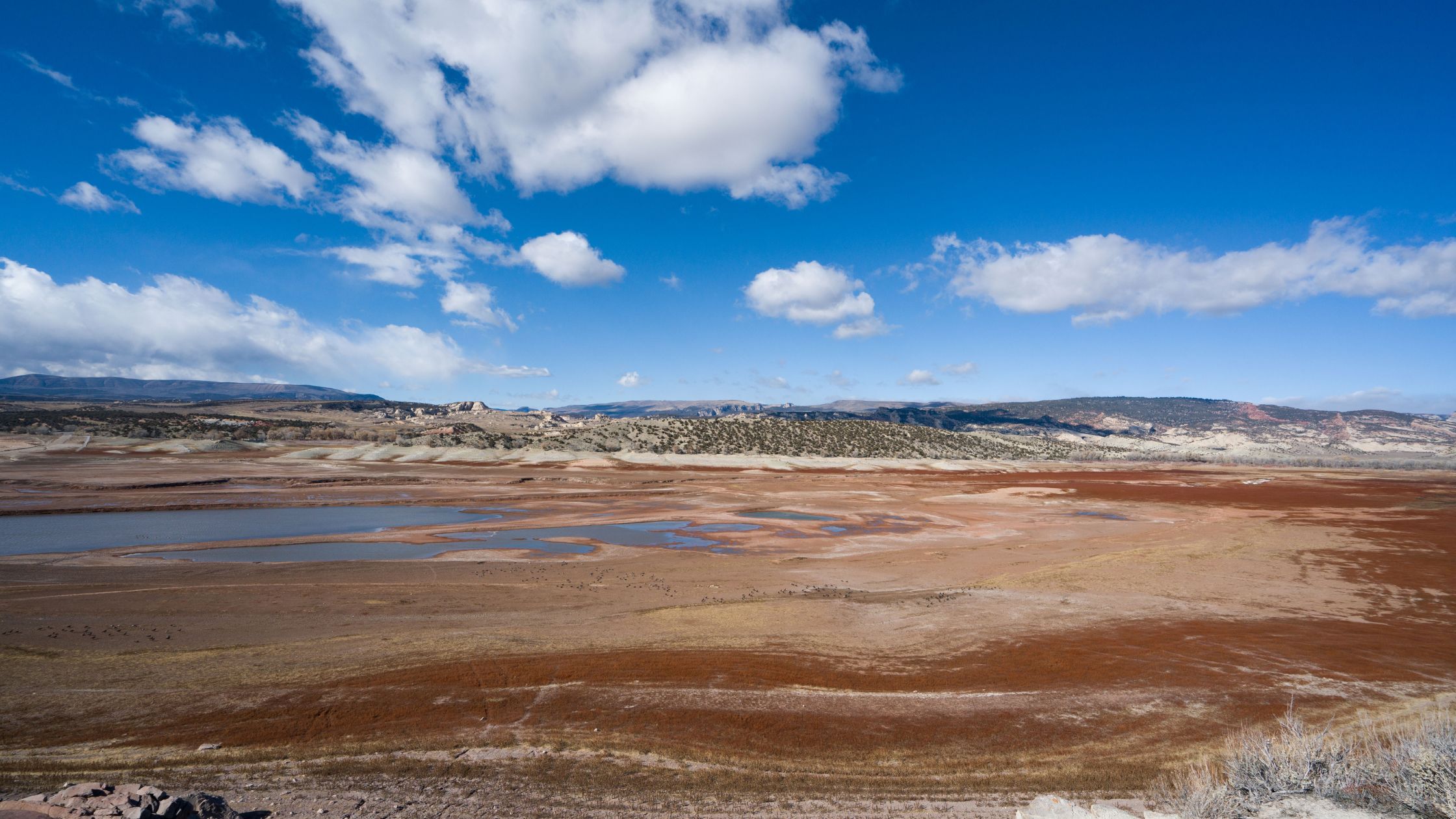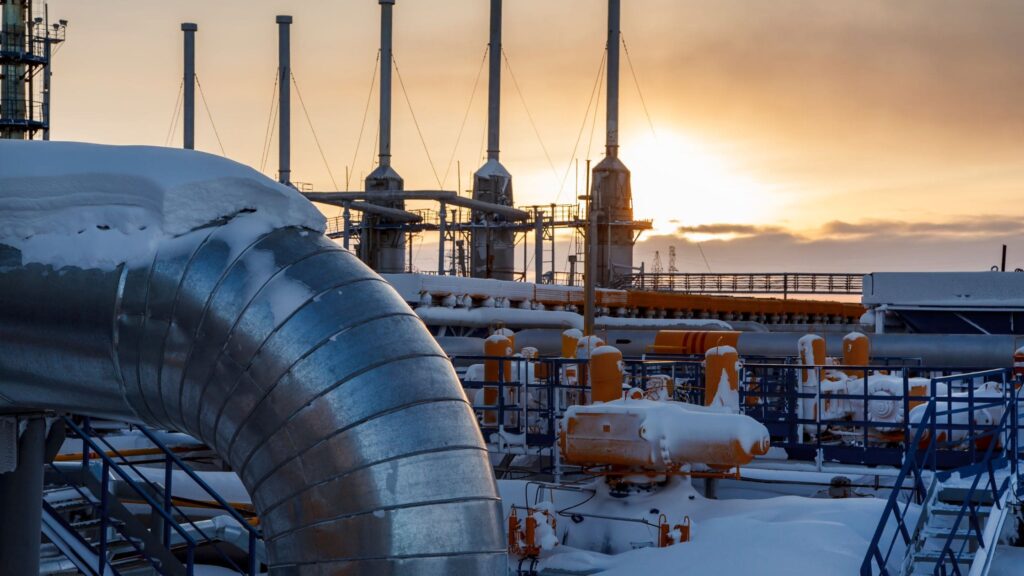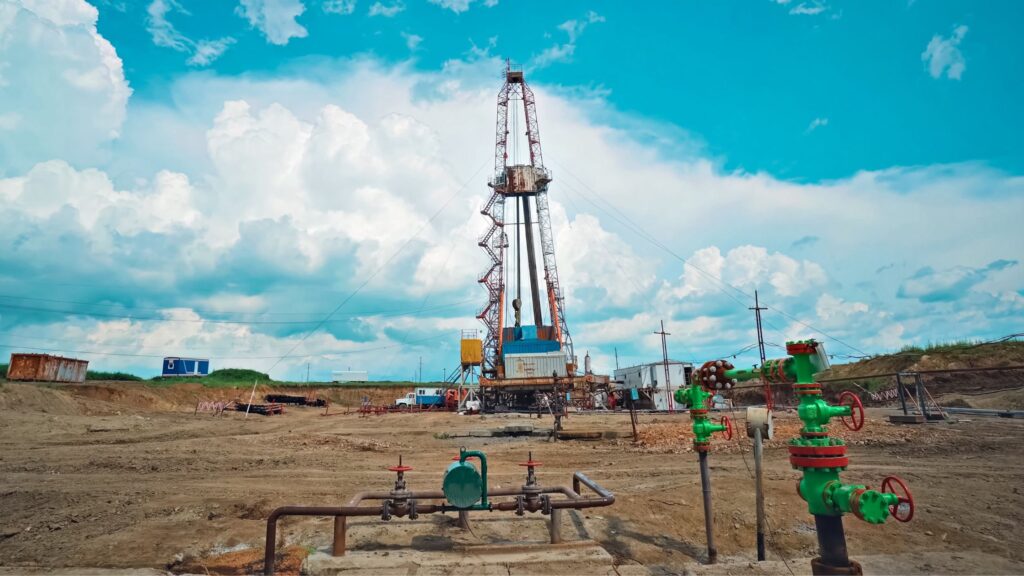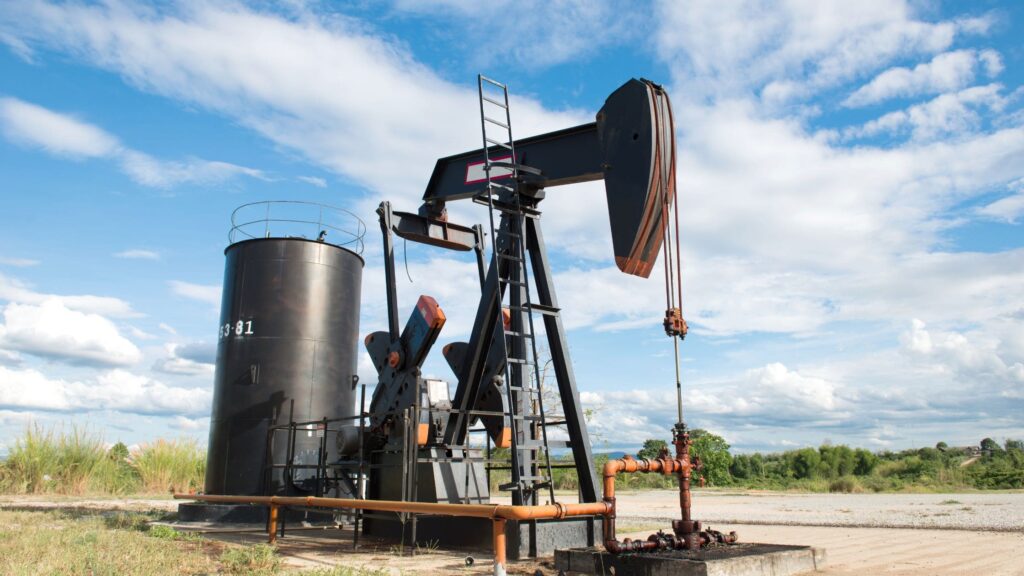These geological treasures are more than just assets; they’re part of a larger narrative that supports the USA’s stance as a self-reliant energy leader. In this article, we’ll focus on exploring these critical resources, their impact on our lives, and how they contribute to both national security and economic stability. Let’s uncover the layers of complexity and opportunity that lie beneath our feet.
Keep reading.
What are Mineral Basins and Shale Formations?
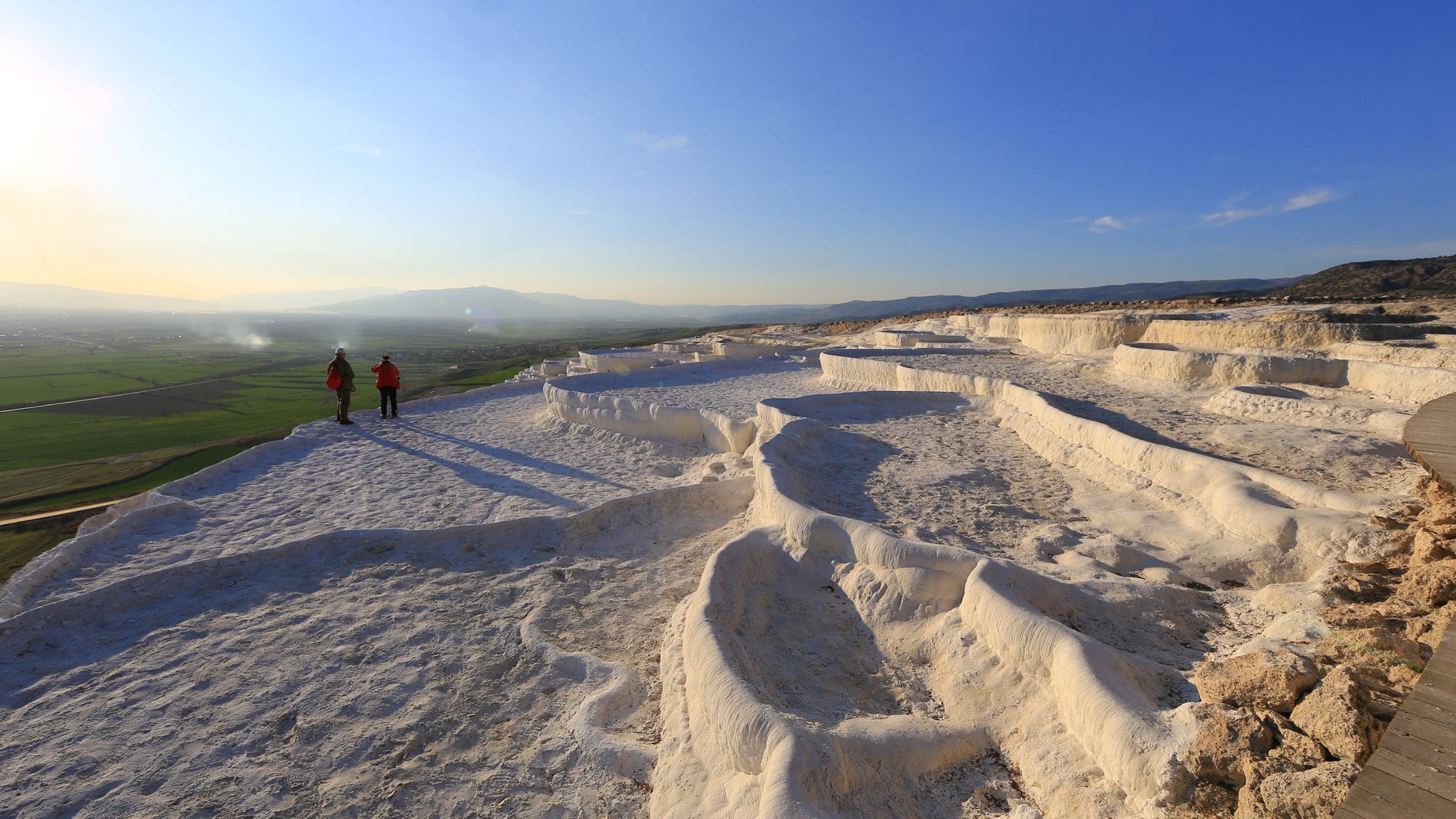 Mineral basins and shale formations are geological structures that contain a wealth of mineral resources, essential for various industrial processes. These basins are typically extensive areas where significant mineral deposits are found, often associated with ancient sedimentary rocks. Shale formations, characterized by fine-grained sedimentary rocks, can house organic materials that, over millions of years, transform into oil and gas. Economically, these formations are indispensable. They not only support the extraction industries but also play a critical role in energy production, contributing significantly to both local and national economies. Their exploration and development have led to technological advancements in drilling and extraction, further enhancing their value.
Mineral basins and shale formations are geological structures that contain a wealth of mineral resources, essential for various industrial processes. These basins are typically extensive areas where significant mineral deposits are found, often associated with ancient sedimentary rocks. Shale formations, characterized by fine-grained sedimentary rocks, can house organic materials that, over millions of years, transform into oil and gas. Economically, these formations are indispensable. They not only support the extraction industries but also play a critical role in energy production, contributing significantly to both local and national economies. Their exploration and development have led to technological advancements in drilling and extraction, further enhancing their value.
Where are the Major Mineral Basins and Shale in the USA Located?
In the United States, major mineral basins and shale formations span across various regions, each harboring distinct types of resources. Notably, the Appalachian Basin is rich in coal and natural gas, while the Mid-Continent Basin in Oklahoma is known for oil and natural gas. The Permian Basin in Texas and New Mexico is renowned for its substantial oil reserves. These locations, among others, underscore the diverse geological wealth scattered throughout the country, playing a crucial role in the nation’s energy sector.
What are the Major Metallic Mineral Basins in the USA?
Across the United States, several basins are celebrated for their metallic mineral deposits, contributing significantly to the country’s mining sector.
Lead and Zinc Deposits
The extraction of lead and zinc in the USA plays a significant role in the mining industry, contributing to both local economies and global markets. Below are some key districts known for their substantial lead and zinc production:
- Southeast Missouri Lead District (Missouri): This area is one of the largest lead-producing regions globally and also significantly contributes to zinc production. The mining here is integral to the metal industry of the United States.
- Coeur d’Alene District (Idaho): This district is celebrated for its rich deposits of silver, lead, and zinc. Mining here has been pivotal to Idaho’s economy and remains a cornerstone of the local industry since its discovery in the late 19th century.
- Red Dog Mine (Alaska): Standing as one of the world’s largest zinc producers, the Red Dog Mine also extracts significant quantities of lead. Its operations demonstrate the economic viability of resource extraction in remote locations.
Iron Ore Basins
Iron ore is an important resource for the steel manufacturing industry, and the United States has several basins that are key to supplying this vital mineral.
- Mesabi Range (Minnesota): Dominating U.S. iron ore production, the Mesabi Range has been actively mined for over a century. Its ore is essential for steel-making, a core industry in American manufacturing.
- Marquette Range (Michigan): This range is noted for its high-grade iron ore, which has been mined since the 19th century. The iron from this area has been a major component in the nation’s industrial growth.
- Cuyuna Range (Minnesota): Although lesser-known than the Mesabi Range, the Cuyuna Range provides significant quantities of iron ore and manganese, contributing to the diversity of Minnesota’s mineral resources.
Uranium Deposits
In nuclear energy, the uranium deposits in the USA are significant both in volume and strategic importance. Let’s explore the major locations:
- Colorado Plateau (Utah, Colorado, Arizona, and New Mexico): This region is historically one of the most prolific uranium producers in the United States. Mining here boomed in the mid-20th century, driven by the demand for nuclear energy and weaponry.
- Wyoming Basins (Wyoming): Wyoming’s basins are noted for their low-cost, high-grade uranium deposits. These basins have contributed significantly to domestic uranium output, positioning Wyoming as a leader in U.S. uranium mining.
- Texas Gulf Coast (Texas): The Gulf Coast of Texas is known for its in-situ recovery (ISR) uranium mining, which is less disruptive to the landscape and more cost-effective than traditional mining methods.
Copper Deposits
Copper is essential for electrical equipment and is also found abundantly in the USA. The key locations include:
- Bingham Canyon Mine (Utah): Often referred to as the largest open-pit mine in the world, the Bingham Canyon Mine has been a major copper producer since 1906, offering insights into the extensive industrial mining practices that have evolved over the years.
- Morenci Mine (Arizona): This is the largest copper producer in North America, featuring advanced mining techniques that exemplify the shift towards sustainable practices in the mining industry.
- Resolution Copper (Arizona): Currently one of the largest undeveloped copper projects globally, Resolution Copper aims to set new standards in environmental stewardship and community engagement in copper mining.
Gold Deposits
Gold has always captivated human interest, and the USA hosts several prolific gold mining areas:
- Carlin Trend (Nevada): This location is synonymous with gold mining in Nevada, representing one of the richest gold mining districts in the world. The Carlin Trend’s unique geology makes it a study case for mining technology and ore treatment processes.
- Homestake Mine (South Dakota): Once the largest and deepest gold mine in North America, Homestake has contributed significantly to the understanding of deep underground mining techniques.
- Mother Lode Belt (California): This historically significant gold mining area was the heart of the California Gold Rush in the mid-19th century, and its legacy continues to influence mining practices today.
Other Metallic Resources
Beyond the well-known minerals, the U.S. is rich in other metallic resources that are vital for various high-tech applications.
- Stillwater Complex (Montana): Known for its substantial deposits of platinum and palladium, the Stillwater Complex is crucial for the production of catalytic converters and other electronics. The mining operations here are a significant source of these rare metals in the United States.
- Rhyolite Ridge (Nevada): This location is an emerging source of lithium and boron, minerals essential for modern technologies such as battery production and ceramics. The development of Rhyolite Ridge is seen as pivotal for boosting domestic production of these critical materials.
What are the Major Non-Metallic Mineral Basins in the USA?
The U.S. also contains extensive deposits of non-metallic minerals that are integral to construction, manufacturing, and other industries.
Sand, Gravel, and Crushed Stone Basins
These basic yet crucial materials are sourced from numerous basins across the country:
- Great Plains Region (Midwest): This region is a leading producer of sand and gravel, with extensive deposits that support the construction industry across the Midwest. The materials mined here are fundamental to building infrastructure from roads to residential housing.
- Appalachian Mountains (Eastern USA): The Appalachian range is rich in crushed stone resources, which are extracted to produce aggregate, an essential component in construction. The unique geological features of this area make it a primary source for high-quality stone used throughout the Eastern United States.
Salt Deposits
The United States features extensive salt deposits, crucial for both culinary and industrial applications. Here are some notable locations:
- Michigan Basin (Michigan): This basin is renowned for its vast rock salt deposits, which have been mined for over a century. The salt from this area is primarily used for road deicing and as a raw material in chemical industries.
- Gulf Coast Salt Domes (Texas and Louisiana): The salt domes along the Gulf Coast are significant due to their unique geological formation and the critical role they play in the petrochemical industry. They are also used for hydrocarbon storage.
- Paradox Basin (Utah and Colorado): Known for its potash and salt deposits, this basin supports agriculture through the production of potash-based fertilizers and provides salt for various uses.
Precious Stones
The pursuit of precious stones in the USA has uncovered some unique and valuable deposits:
- Douglas Diamonds (Arkansas): Arkansas’s Crater of Diamonds State Park is the only public diamond-bearing site in the world, where visitors can search for and keep any gems they find, including diamonds.
- Montana Sapphire Deposits (Montana): These deposits are among the largest sources of sapphires in North America. The stones from Montana are known for their unique colors and are prized in the gemstone market.
Other Non-Metallic Resources
Beyond the typical minerals, several U.S. locations are known for their unique non-metallic resources:
- St. Lawrence River Valley (New York): This region is noted for its substantial gypsum deposits. Gypsum is essential for the production of plaster and wallboard, materials fundamental to the construction industry.
What are the Major Shale Basins in the USA?
The United States is home to some of the world’s largest and most productive shale basins, which have dramatically reshaped the landscape of energy production domestically and globally. These basins are crucial for their substantial contributions to oil and natural gas output.
Permian Basin (Texas and New Mexico)
The Permian Basin, sprawling across West Texas and southeastern New Mexico, stands as a cornerstone in U.S. energy production. Renowned for its rich petroleum and natural gas reserves, this basin is divided into various sub-basins and plays, with the Delaware and Midland basins being the most prominent. The Permian Basin’s strategic importance is underscored by its layered geological features that allow for multiple oil and gas extraction techniques, including horizontal drilling and hydraulic fracturing. This basin not only fuels local economies but also significantly impacts national energy policies and markets.
Delaware Basin (West Texas and Southeastern New Mexico)
Nested within the larger Permian Basin, the Delaware Basin is particularly noted for its thickness and unique geological attributes that make it one of the most prolific hydrocarbon sources in North America. The basin’s complex rock formations store vast quantities of oil and natural gas, which are extracted through advanced drilling technologies. This region’s development has been pivotal in boosting U.S. oil production and reducing dependence on imported oil.
Eagle Ford Shale (Texas)
The Eagle Ford Shale in Texas is another major player in the U.S. shale revolution. Stretching over counties from East Texas to Mexico, it is prized for its favorable geology that supports both oil and gas window development. The Eagle Ford Shale is distinguished by its high-quality oil and extensive gas reserves, making it a critical asset in the national energy portfolio. The development of this shale has brought economic revitalization to many Texas communities, providing jobs and significant tax revenues.
Marcellus Shale (Appalachian Basin)
Situated within the expansive Appalachian Basin, the Marcellus Shale is primarily known for its substantial natural gas reserves, which rank among the largest in the world. This shale stretches across several states, including Pennsylvania, West Virginia, and New York, and has been a focal point for energy companies due to its deep, richly organic-black shale formations. The exploitation of the Marcellus Shale has transformed the energy landscape, enabling the U.S. to become one of the world’s leading natural gas producers.
Utica Shale (Appalachian Basin)
The Utica Shale, situated beneath the larger Marcellus Shale in the Appalachian Basin, spans several states including New York, Pennsylvania, Ohio, and West Virginia. This shale formation is known for its substantial deposits of natural gas, natural gas liquids, and oil, making it a significant contributor to the U.S. energy supply. Drilling in the Utica Shale has been particularly impactful in Ohio, where it has boosted local economies and increased energy independence. The depth of the Utica Shale varies, requiring more advanced drilling techniques than those used in the Marcellus, highlighting its complexity and the technological advancements in extraction methods.
Haynesville Shale (Louisiana and East Texas)
The Haynesville Shale, primarily located in Northwest Louisiana and East Texas, is one of the top natural gas-producing shales in the United States. This formation was one of the first to be developed using modern hydraulic fracturing and horizontal drilling techniques, setting a precedent for other shale plays. The Haynesville Shale is noted for its depth and high natural gas yield, which have made it a cornerstone of the U.S. strategy to increase energy security and reduce reliance on imported energy sources.
Williston Basin (Montana, North Dakota, and Canada)
Covering parts of Montana, North Dakota, and extending into Canada, the Williston Basin is perhaps best known for the Bakken Shale, one of the largest oil discoveries in recent U.S. history. The Bakken and other layers within the Williston Basin have transformed the region into one of the country’s foremost centers for oil production. The development of the Bakken has spurred extensive economic growth in the region, creating thousands of jobs and significantly contributing to local economies.
Anadarko Basin (Oklahoma and Texas)
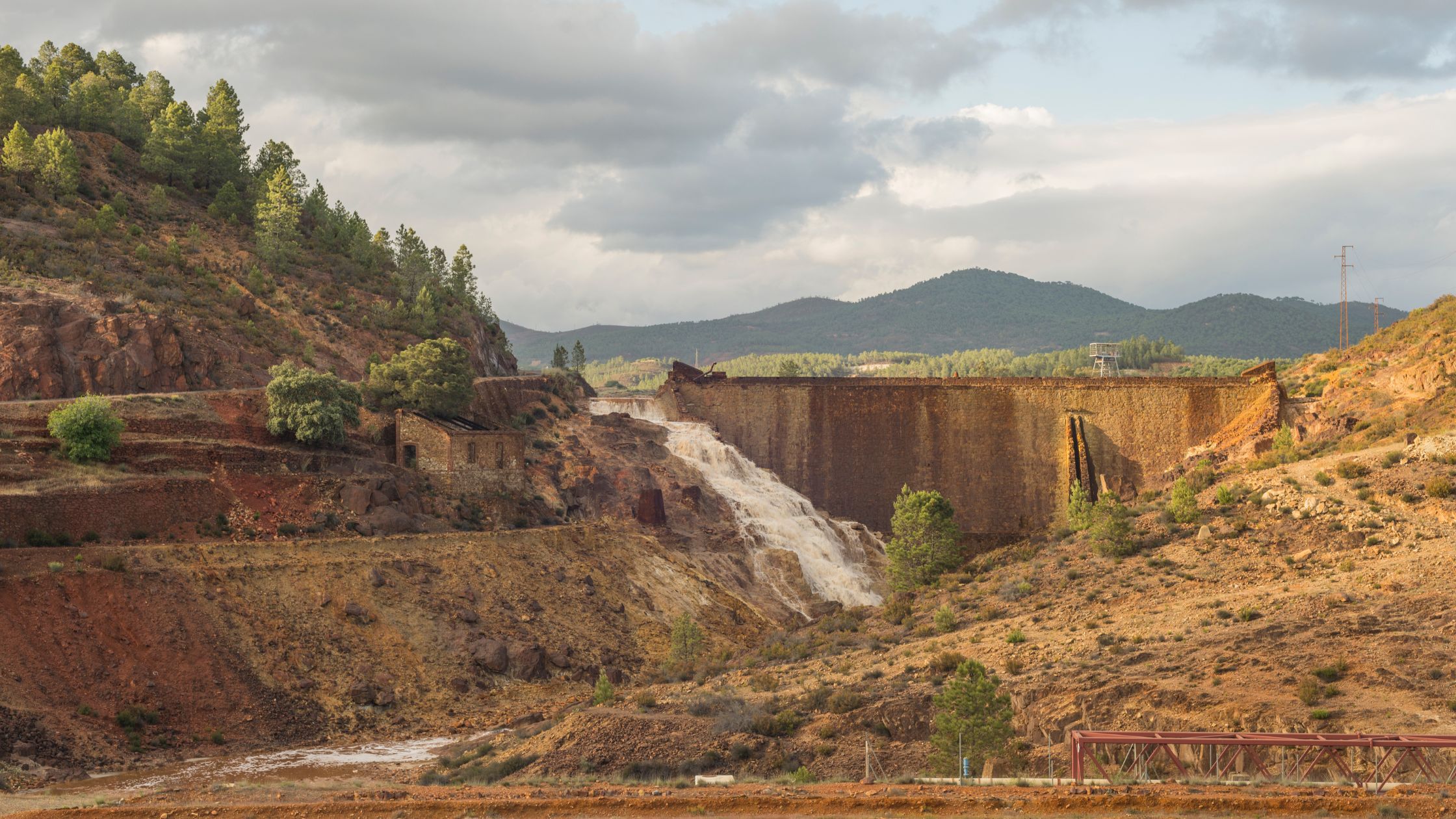
Granite Wash Basin (Oklahoma and Texas)
The Granite Wash Basin, located at the border of Oklahoma and Texas, is characterized by its highly challenging geological formations. Despite these challenges, it is a prolific producer of both oil and gas, thanks to advanced extraction technologies that have unlocked the potential of its tight sands. The basin’s unique attributes include varying depths and pressures, requiring specialized drilling and completion techniques that have driven technological advancements in the industry.
Other Shale Basins
These shale basins exemplify the rich diversity and geological complexity of the United States’ natural resources.
- Barnett Shale (Texas): Located in North Texas, the Barnett Shale is often regarded as the birthplace of modern shale gas drilling. This basin has pioneered techniques such as horizontal drilling and hydraulic fracturing, setting a standard for shale gas extraction worldwide.
- Antrim Shale (Michigan): The Antrim Shale is primarily known for its natural gas production. Its development has been integral to Michigan’s energy supply, contributing significantly to the local economy.
- Fayetteville Shale (Arkansas): Situated in Arkansas, the Fayetteville Shale is a key natural gas-producing formation. Its exploitation has supported local infrastructure development and provided a substantial economic uplift in the region.
What is the Largest Shale Formation in the United States?
The Marcellus Shale, primarily located in Pennsylvania, West Virginia, and New York, is the largest shale formation in the United States. Covering approximately 95,000 square miles, it is renowned for its substantial natural gas reserves, which significantly contribute to the U.S. energy sector. The development of the Marcellus Shale has revolutionized the natural gas industry, positioning the U.S. as a leader in global energy production.
What State has the Most Shale?
Texas holds the distinction of having the most shale resources in the United States. It is home to several major shale formations, including the Permian Basin, Eagle Ford Shale, and Barnett Shale, making it a central player in the U.S. energy industry. Texas’s shale resources have been instrumental in driving the state’s economy, enhancing job creation, and ensuring energy security nationally.
Who is the Largest Shale Oil Producer in the US?
ExxonMobil stands as the largest shale oil producer in the United States. With extensive operations in the Permian Basin and other key shale regions, ExxonMobil has harnessed innovative technologies to optimize oil extraction and production, leading to increased efficiency and reduced environmental impact. Their leadership in the industry underscores the significant role of large energy corporations in shaping the U.S. oil landscape.
Coal Basins
The United States has several key coal-producing basins, each playing a notable role in the nation’s energy production and economic stability.
Powder River Basin (Wyoming and Montana)
The Powder River Basin, spanning northeastern Wyoming and southeastern Montana, is the largest coal-producing area in the United States. Renowned for its low-sulfur, sub-bituminous coal, this basin supplies about 40% of the coal in the country, making it a critical component in the U.S. energy mix. The coal extracted from this region is predominantly used for electricity generation, contributing to the nation’s effort to meet its energy demands while complying with environmental standards.
Appalachian Coal Basin (Eastern USA)
The Appalachian Coal Basin, stretching across parts of Pennsylvania, Ohio, Kentucky, Tennessee, and Alabama, is one of the oldest coal-producing regions in the United States. Known for its high-grade metallurgical coal, this basin has historically been vital for steel production. Despite the decline in demand due to shifts in energy resources, the Appalachian Basin remains a significant source of employment and economic activity in the region, reflecting its enduring legacy in the American industrial landscape.
Illinois Basin (Illinois, Indiana, Kentucky)
The Illinois Basin, spanning across Illinois, Indiana, and Kentucky, is a significant coal-producing region in the USA. This basin has been an essential source of bituminous coal for over a century, fueling power generation and manufacturing across the Midwest and beyond. The coal from the Illinois Basin is known for its high sulfur content, which has influenced the development of technologies for sulfur emissions reduction. The economic impact of this basin extends beyond mining, affecting rail transportation, utility companies, and the broader energy market in the region.
Uinta Basin (Utah and Colorado)
The Uinta Basin, located in northeastern Utah and extending into western Colorado, is another critical coal-producing area. Unlike the Illinois Basin, the Uinta Basin’s coal is characterized by its low sulfur content, making it more desirable under environmental regulations. This feature, combined with the basin’s substantial production capacity, positions the Uinta Basin as a key player in the U.S. coal industry. The coal extracted here supports local power plants and is also exported to other states, contributing significantly to the local and national economies.
Other Notable Mineral Basins
In exploring the diverse geological treasures of the United States, we uncover regions rich not only in common minerals but also in critical resources pivotal for modern technologies and the energy sector. These additional basins highlight the geological diversity and the strategic importance of these minerals.
Rare Earth Mineral Deposits
The Mountain Pass Mine in California stands as a significant rare earth mineral deposit in the United States. Located near the Nevada border, this mine has been instrumental in supplying rare earth elements (REEs) critical for high-tech electronics, renewable energy technologies, and military applications. The minerals extracted here, including cerium and neodymium, are essential components in everything from smartphones to electric vehicles and defense systems. The Mountain Pass Mine’s operation reflects strategic efforts to reduce dependency on foreign REE sources and bolster domestic production capabilities.
Lithium Deposits
- Clayton Valley (Nevada): Nestled in the heart of Nevada, Clayton Valley is one of the few U.S. locations producing lithium. This valley hosts the only operating lithium brine mine in North America, making it pivotal for the burgeoning battery industry, crucial for renewable energy storage and electric vehicles.
- Salton Sea (California): The Salton Sea geothermal field in California represents a promising future source of lithium. This area is undergoing development to extract lithium from geothermal brines, a byproduct of geothermal energy production. If successful, it could significantly expand the U.S. lithium supply, essential for sustainable technologies and energy independence.
Phosphate Basins
The Florida Phosphate District, spanning central Florida, is a leading producer of phosphate in the United States. This region is crucial for the production of fertilizer, essential for the global agricultural sector. The mining operations here are among the most productive worldwide, given Florida’s extensive phosphate deposits that originated millions of years ago from marine sediments.
The Southeastern Idaho Phosphate District is another significant area, where phosphate mining has been an economic mainstay since the early 20th century. This district is known for its high-quality phosphate rock, which is vital for producing fertilizers and other chemical products. The operations in Idaho contribute substantially to the local and national economy, emphasizing the importance of this mineral resource.
Other Notable Basins
The versatility of the U.S. mineral landscape is further demonstrated by the variety of other significant basins, each contributing uniquely to the nation’s resource portfolio.
- Green River Basin (Wyoming, Colorado, Utah): Known primarily for its vast oil shale deposits, the Green River Basin holds a pivotal place in potential future oil extraction projects. Its development could significantly alter the U.S. energy landscape, providing a domestic source of oil from shale.
- San Juan Basin (New Mexico and Colorado): This basin is renowned for its coalbed methane reserves, a clean energy source that has been harnessed to reduce environmental impacts. The San Juan Basin continues to play a crucial role in supplying natural gas, aiding in the transition towards more sustainable energy practices.
Regulatory and Policy Frameworks Governing Mineral and Shale Basins
Fully understanding the complexities of regulatory frameworks that govern the extraction and management of mineral and shale resources in the USA is crucial. At the federal level, regulations from agencies such as the Environmental Protection Agency (EPA) and the Bureau of Land Management (BLM) play pivotal roles. These agencies ensure that mining operations comply with environmental standards and land-use policies. State-level regulations can vary significantly, with states like Texas and North Dakota having distinct rules tailored to their specific geological and economic contexts. Additionally, local laws may address more immediate environmental or safety concerns, influencing operational practices in mining and extraction industries. Together, these regulations form a comprehensive governance framework that balances resource development with environmental protection and community interests.
Conclusion
As we wrap up our discussion on the major mineral basins and shale formations in the United States, it’s clear how vital these resources are to our national economy and energy independence. These aren’t just geological deposits; they are the pillars of our industrial strength, fueling everything from daily energy needs to advanced technologies.
Understanding and managing these resources responsibly secures our future and supports global stability. As demands for minerals and energy grow, the role of these basins becomes even more crucial. It’s up to us to develop these resources wisely, ensuring we meet today’s needs while protecting our environment for tomorrow.

